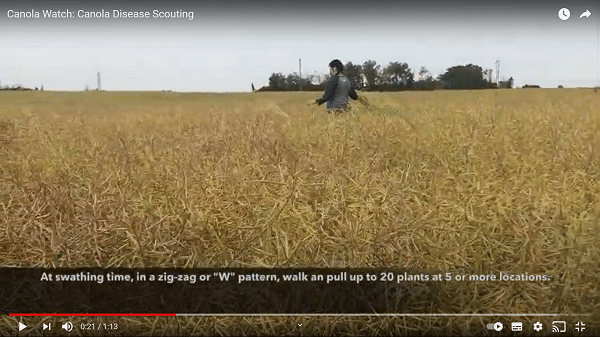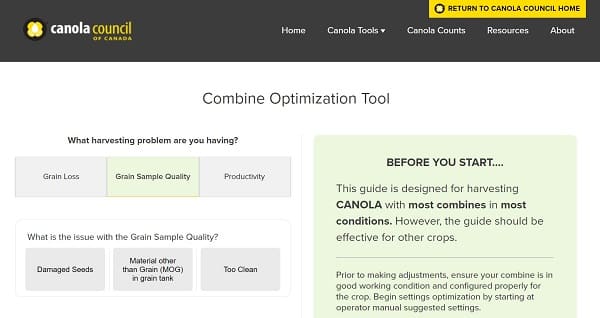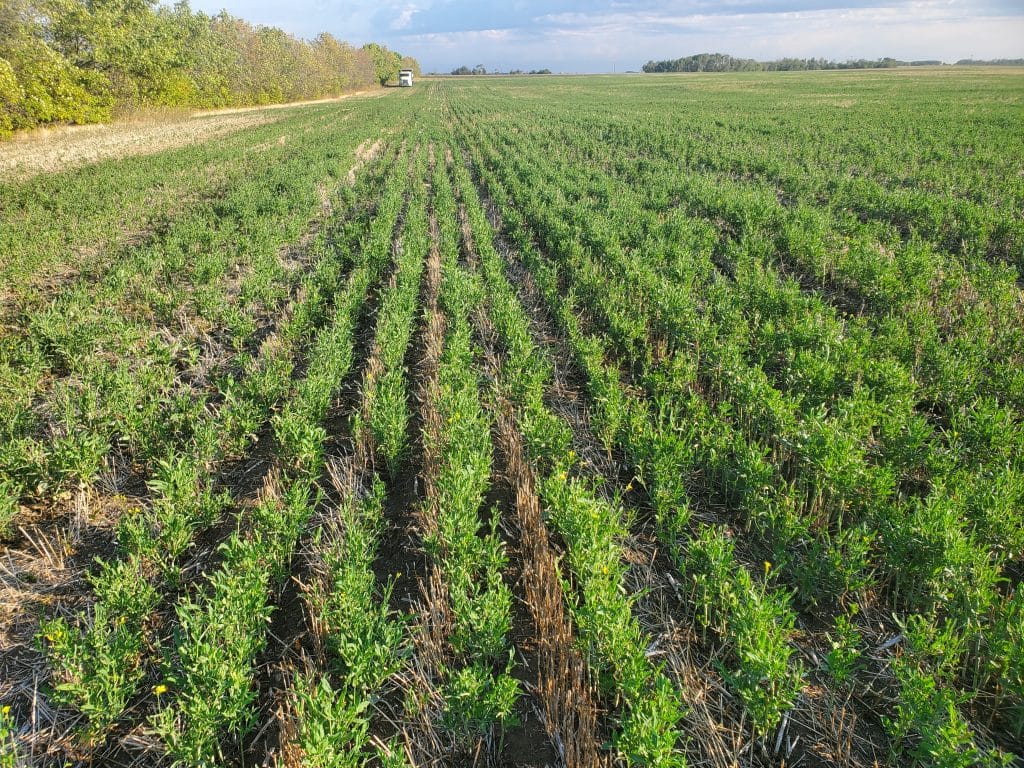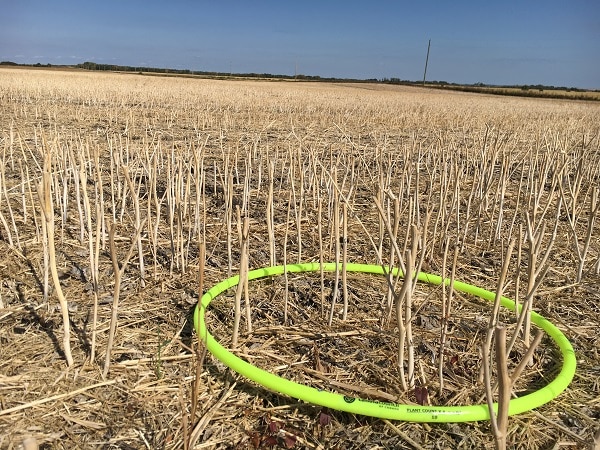
Minimize loss with combine optimization, samples
Holding on to as much quality seed as possible is canola growers’ number one priority every year, but minimizing harvest loss is more critical than ever after this difficult growing season. There are tools available to help do this. Check out the Harvest Loss tool to help calculate estimated harvest losses. Then use the “Grain Loss” option in the Combine Optimization Tool to figure out how to minimize the losses. On a related note, there have been reports of green seed and other dockage material in swathed canola throughout western Canada. If you find such material, your best bet is to take a sample, measure the amount of material that is not grain and develop a strategy for conditioning and storage. A list of factors that increase canola storage risk can be found here.

Time to pull some plants
It’s never too late to scout for diseases such as clubroot, blackleg or verticillium stripe. However, pre-harvest is the optimal time to do so. Experts recommend randomly pulling field-representative plants to determine the yield impacts from these and other diseases. While you are scouting for disease, make note of plant counts, nutrient deficiencies and insect feeding and record other environmental damage created this season. Look for trends among management practices, the crop protection products applied and the environmental conditions this year to help in the management of future crops.
August rain, September problems
Depending on your location and situation, a dry growing season followed by late rains has created new obstacles to tackle, including a possible need for crop dry-down and a renewed requirement for weed control. This research summary provides some results on pre-harvest herbicide and desiccation options. Always be aware of pre-harvest intervals (PHIs) of crop protection products in order to keep your canola marketable. If in doubt, use the Spray to Swath Interval Calculator. Late rain has resulted in regrowing canola in parts of Manitoba, Saskatchewan and Alberta. Experts recommend desiccating or swathing this regrowth while the crop is still standing; there are no crop products that can be used on regrowing canola once it’s already swathed (see this article). Moisture-sucking winter annual weeds have also been spotted in the same regions. Advice for managing weeds in the fall — including winter annuals — is available here.

Post-harvest a good time to count canola stems
It might be an early reminder for some, but don’t forget to do a post-harvest stem count. This lets you calculate your crop’s survival percentage and compare the results to spring plant counts. By collecting a few years’ worth of plant stand data and cross-referencing it with seeding rate, yield, seed quality and maturity records, producers can determine their own most economic target plant stands and seeding rates. Farmers can also enter fall stubble counts and re-calculate emergence at CanolaCounts.ca. The crowdsourced CanolaCounts.ca data can be found here.
